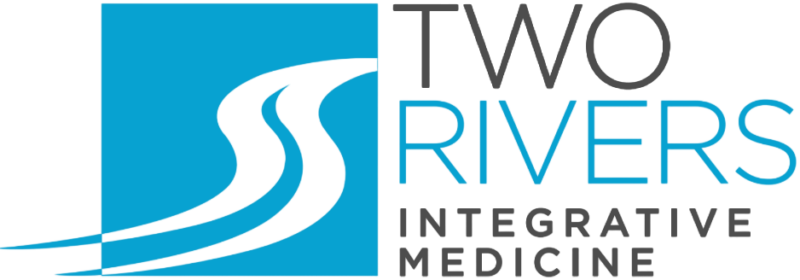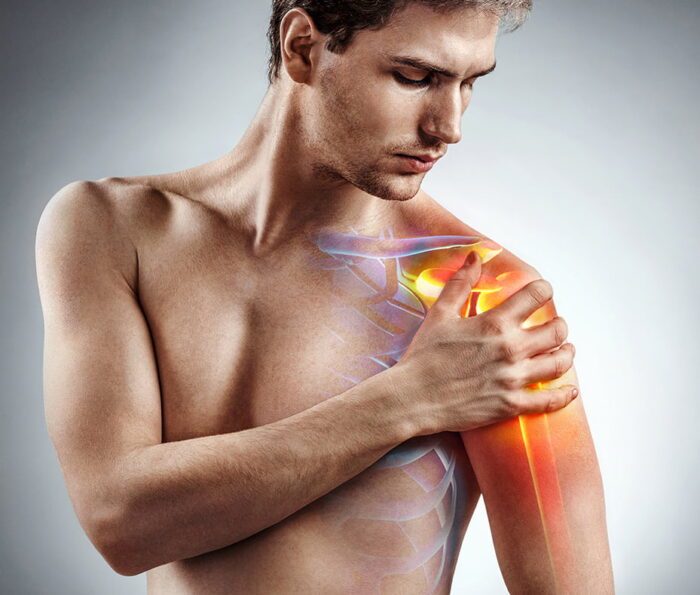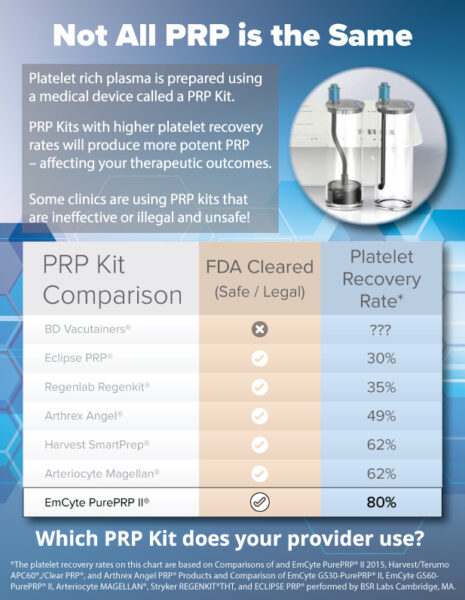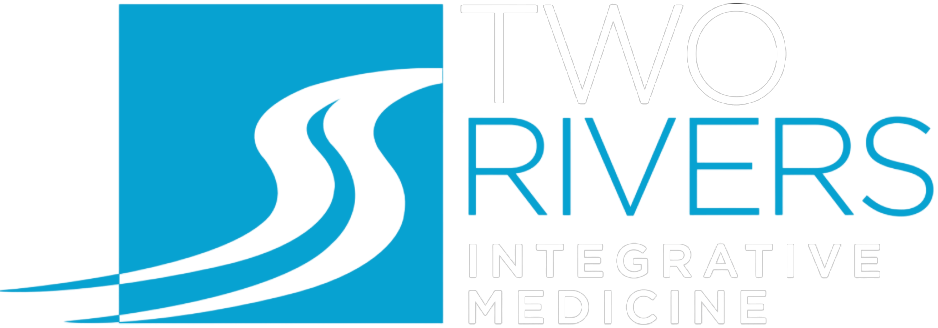FAQs: Platelet Rich Plasma (PRP)
PRP is a minimally processed extract of your own blood, providing a concentrated source of platelets. These platelets play a major role in the early stages of healing after an injury, so a large dose of them in a specific area can speed healing in a recent injury, re-start a healing response in an old injury, or balance an inflammatory response in chronic conditions such as arthritis. Ultimately, PRP can help promote healing and reduce inflammation.
For PRP injections, your doctor takes a blood sample from your arm. Then, they place the blood in a centrifuge that separates the platelets from the other blood layers*. The final PRP product is then concentrated under sterile conditions* to minimize risk of contamination. The PRP solution is then injected where needed.
*For those doing their research, we use a double spin technique, with sterile preparation under a laminar flow hood.
Injections can be uncomfortable, however anesthetic like lidocaine is used to decrease pain levels. Pain can vary by regions of injection but is often quite manageable for most individuals and often passes quickly after treatment. The focus of Dr. Norris is safe and effective injections that includes attention to reducing pain with skilled injections. Following injections, Tylenol can be used to manage any pain. Anti-inflammatory medications, such as aspirin and ibuprofen, will suppress the proper healing response and are not recommended following Prolotherapy injections.
The number of treatments that will be needed depends on the type of condition, severity, and overall health of the individual to support an optimal healing response.
Platelet Rich Plasma (PRP): The average number of treatments is 2-4 treatments. We find that one PRP treatment is equal to roughly 3 prolotherapy treatments. Treatment outcomes are dependent on the health of the individual’s platelets. Each patient will have a different level of health resulting in varying outcomes between patients.
- Fibromyalgia
- Severely herniated disks
- Chronic myofascial pain syndromes
- Central spinal stenosis
- Complete rotator cuff tears
- Frank surgical conditions
- Pain from cancer
- Pain from autoimmune disease
When ligaments and tendons are stretched they cause pain. Regenerative Injection Therapies, including Prolotherapy and PRP, helps to reduce ligament laxity and repair cartilage, collagen and regenerate the joint to reduce ligament laxity and reduce pain.
Simply put, these therapies help to regenerate the tissues.
Cortisone is temporary and damaging to the tissues. Cortisone short term reduces inflammation but long term it disintegrate or breaks down the joint tissues. Many of you out there have failed to get long term relief from cortisone injections and know the damaging effects of these injections.
Prolotherapy and PRP depend on the body’s ability to heal the injured tissues. The injections act as the source of stimulation for the healing process to occur. If someone’s health is overburdened with inflammation, hormone imbalances, chronic disease, or nutritional deficiencies the body will not be able to respond to the injections as well.
We highly encourage that patients optimize their health prior to seeking Regenerative Injection Therapies (RIT). If you are needing help starting this journey into better health, Dr. Norris can help navigate you to an appropriate physician to address your health concerns.
PRP is generally very safe and well-tolerated with most medications or most medical conditions. Platelet or bleeding disorders, patients on immunosuppressive medications, active cancer, or infection around the site to be treated are all situations when PRP injections are generally not used.
Anticoagulants (blood thinners such as warfarin/coumadin) interfere with platelet function and are relatively contraindicated. For certain patients, discontinuing these medications for a short time before and after treatment, with the prescribing physician’s knowledge and consent, may be an option to undergo treatment.



